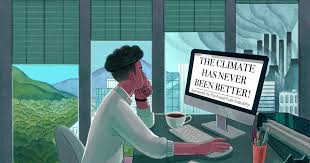As climate-related disasters grow more frequent, so does climate change misinformation. From rising sea levels to record-breaking heatwaves, the effects of climate change are no longer distant predictions, they’re our current reality. However, as the world rushes to address these visible threats, a less apparent yet equally pressing danger of climate misinformation keeps spreading unchecked. As a result, there are thousands of misleading narratives both online and offline that are shaping public opinion, delaying policy action, and undermining trust in science.
Why is climate misinformation harmful?
Climate misinformation creates confusion, delays urgent action, and weakens public support for climate solutions. At its core, climate misinformation spreads doubt about the science, the solutions, and the urgency of the crisis. When people aren’t sure what to believe, they’re less likely to support policies or make lifestyle changes that could drive real environmental impact.
One of the most common forms of climate misinformation is the claim that climate change is just part of a natural cycle. Despite decades of research and overwhelming scientific consensus pointing to human activities particularly fossil fuel use as the primary driver of global warming, some still cling to outdated or debunked narratives. This fosters skepticism and makes it easier for polluting industries and resistant policymakers to avoid accountability.
Another growing concern is the manipulation of public opinion through online platforms. AI-generated content, fake images, and misleading videos have become tools for undermining trust in climate science and environmental activism. For example, doctored videos of scientists “admitting” to data manipulation, or false claims that climate protests are funded by hidden agendas, circulate widely and often go unchecked.
Then there’s the issue of greenwashing when companies exaggerate or fabricate their environmental credentials. A brand might promote “eco-friendly” products while continuing harmful practices behind the scenes. These tactics not only mislead consumers but also distract from genuine solutions and actions that could curb emissions and reduce waste.
Even during natural disasters, disinformation thrives. After a wildfire or flood, you’ll often find narratives blaming poor land management or random chance while omitting the growing role of climate-induced extremes. This selective storytelling distorts reality and diminishes public pressure for meaningful environmental reform.
What can be done?
The first step is education. Empowering the public with media literacy skills helps people question sources, verify claims, and resist emotional manipulation. Platforms and media outlets also have a role to play by elevating credible science, flagging falsehoods, and being transparent in their moderation practices.
Most importantly, we must acknowledge that truth is a critical tool in the climate fight. Without it, progress stalls and public trust erodes. Climate change misinformation is more than just noise it’s a strategic barrier to action. And until it’s addressed head-on, the fight for our planet remains an uphill battle.
